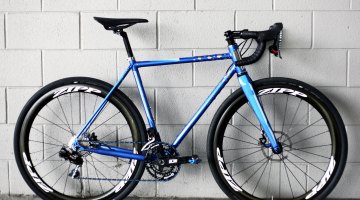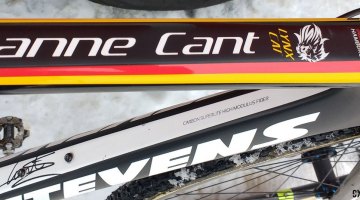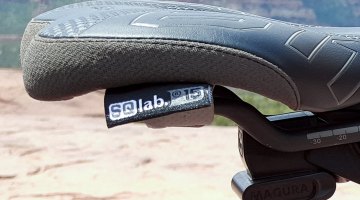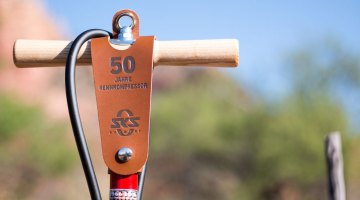Advertisement
Rotor Bike Components has been busy developing a new hydraulic shifting system it is calling Uno, as well as a dual-sided power meter, built around one of the Spanish company’s iconic cranks, called the 2INpower. Today we’re sharing our (quite lengthy) initial impressions on the innovative Uno drivetrain and brakes, with our typical technical analysis from the perspective of a cyclocross and gravel rider. Stay tuned for more on the 2INpower system.
Rotor’s Uno Hydraulic Shifting System
At the Magura Ride Camp in Sedona, Arizona, Rotor Bike Components gave journalists an opportunity to ride its new Uno hydraulic groupset, which yes, includes hydraulic shifting. We first saw the Rotor Uno hydraulic drivetrain at Interbike 2015, and then again at the 2016 Sea Otter Classic. And now we’ve had a chance to ride it without flying to Spain.
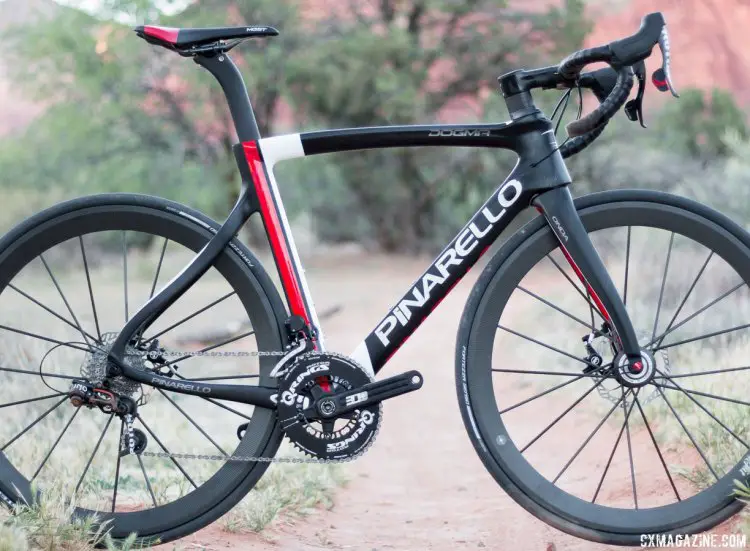
Our Dogma Disk (with a k) test bike with Rotor’s Uno hydraulic shifting component group and Lightweight’s new disc wheels. © Cyclocross Magazine
Six years in development, Uno is the first complete road groupset with hydraulic actuation shifting and braking. Rotor partnered with Magura to produce the group’s brake systems, which are available in both disc and rim versions and applied that know-how to developing the hydraulic shifting system.
The component parts of the Uno group are hand built and assembled in Europe. The groupset will retail for $2,500 USD, but that does not include a crankset since Rotor has so many different options, including its new 2INpower unit described below.
Why Hydraulic?
When Rotor first unveiled Uno at Interbike, I’ll have to admit, I was skeptical. Sure, ACROS showed off early working versions of its AG-E hydraulic shifting system as early as 2011. But after riding Shimano’s Di2 electronic group, and getting one ride on SRAM’s eTap system at Interbike, it seemed Rotor’s choice to move to a hydraulic shifting system over mechanical or electronic was an odd choice.
I don’t enjoy bleeding brakes, and I know mechanically-inclined cyclists who avoid doing any hydraulic brake work themselves like the plague. Hydraulic hoses introduce level of fear about making a mess and also not having the right equipment and fittings, and that’s even before you start to wonder about how you’ll dispose of the fluid properly.
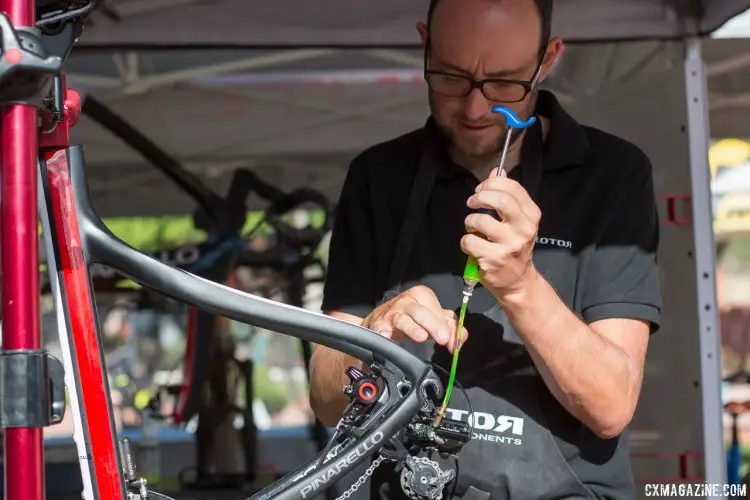
Wolfgang Turainsky tapping out the bubbles, and bleeding the system in just a few minutes. The Uno hydraulic shifting component group from Rotor. © Cyclocross Magazine
So why hydraulic? Rotor, in a surprising display of transparency, told journalists gathered at the 2016 Magura Ride Camp that its lawyers found the intellectual property barriers to electronic drivetrains to be quite high. While that wasn’t an admission to settling on an inferior technology, it was the reason Rotor ended up expanding its search beyond mechanical and electronic shifting in its quest to have the highest performance component group. And the company is both happy and proud as to where that search landed, and touts its hydraulic system as the ultimate in low maintenance, lightweight performance.
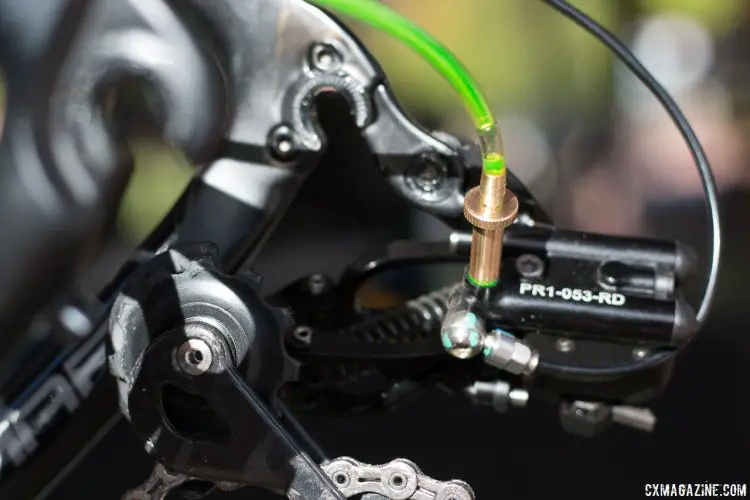
The Uno hydraulic shifting component group from Rotor is a closed hydraulic system, and without a reservoir, it should require less bleeding, but getting out all the air is critical. © Cyclocross Magazine
“Our initial idea was to improve upon existing shifting systems,” said Pablo Carrasco, Rotor’s cofounder. “We knew that our system was a small step forward with its increased precision compared with other cable-actuated systems but we still suffered the same disadvantages of those systems, like friction, devolving inconsistent force over time and other inconveniences. We knew that disc brakes for road were about to become a reality and we challenged ourselves to further the concept and apply hydraulics to actuate shifting as well.”
Hydraulic technology has obviously already been used for braking and suspension systems. Rotor’s hope was to create a shifting system that featured smooth activation, low maintenance, multiple shift positions, hydraulic rim and disc brake options, internal hose routing and low weight.
Continue reading on the next page to learn about weight savings and our ride impressions.























